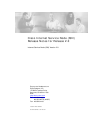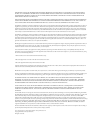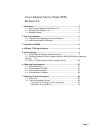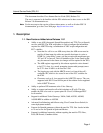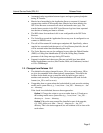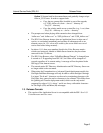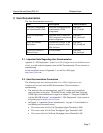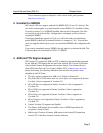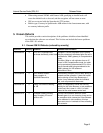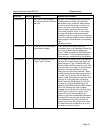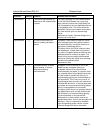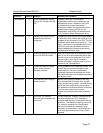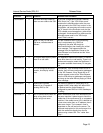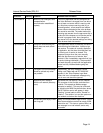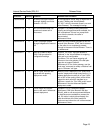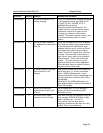Special offers from our partners!

Find Replacement BBQ Parts for 20,308 Models. Repair your BBQ today.

Internet Service Node (ISN) 2.0 Release Notes
Page 6
Option 3: Support both locale nomenclatures and gradually change scripts
from en_US to en-us. In order to support both:
§ Copy the new prompt files (installed as part of the upgrade,
e.g., USD_dollar.wav) from …/en-us/… directory to
…/en_US… directory
§ Copy the existing media server system files (e.g., 1.wav) from
…/en_US/… directory to …/en-us… directory.
• The prompts used when playing dollar currencies have changed from
“dollar.wav” and “dollars.wav” to “USD_dollar.wav” and “USD_dollars.wav”
• The ISN Voice Browser detects when an Application Server is taken out of
service, or overloaded, immediately and reroutes all subsequent calls to an
alternate server (in 1.0.1 a few calls would try the server which was out of
service first before being rerouted). .
• In release 1.0.1, there were numbers listed in the Voice Browser metrics
which were incorrectly labeled as Media Server latencies; they have been
removed for the 2.0 release.
• The ISN Voice Browser value “CalledPartyHangupTimeout” is changed from
8 seconds to 2. If upgrading from ISN 1.0.1, the value will be changed to 2
seconds regardless of its current setting. A message will not be printed in the
ISN log(s) if the timeout occurs.
• The unused entries DC Directory Administration and DC Directory Server are
no longer added to the start menu.
• When using the Comprehensive or Advanced Speech deployment models, the
Get Digits and Menu microapps will only be able to collect the digits 0 through
9 as input. The # and * characters can be used as terminating characters with
Get Digits; they cannot be used as characters to be collected. This differs from
the Queuing and Transfer deployment model (which was the only model
supported by release 1.0.1), where * and # are always collectable characters
for Get Digits (GD) and Menu (M) microapps.
1.3. Release Caveats
§ This version of the Application Server is not compatible with the ISN 1.0 or 1.0.1
Voice Browsers and vice versa.



